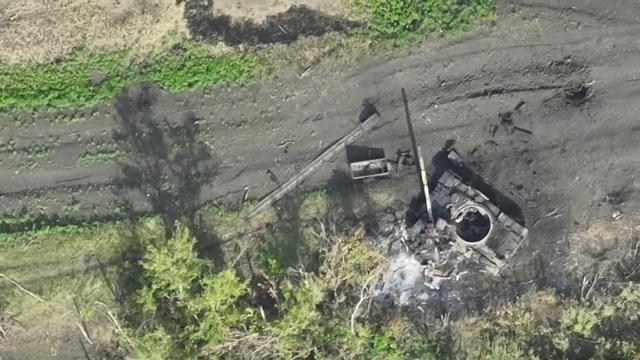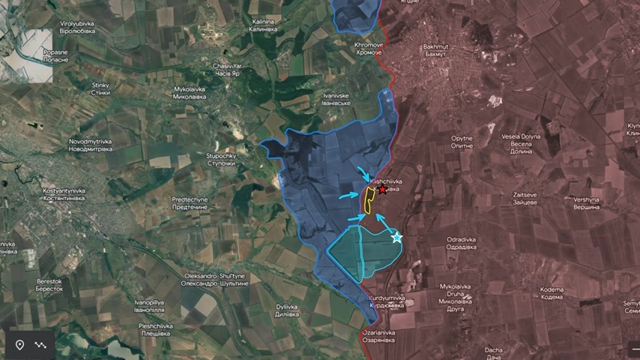Today, there is a lot of good news from the East. In recent developments, Ukrainians noticed a significant shift in the allocation of Russian troops. Desperately diverting their forces to Klishchiivka, Russians left their flanks exposed, and the Ukrainians astutely capitalized on this temporary weakness to launch a successful flank attack.
This operation proved to be of utmost importance for the Ukrainian forces, as it allowed them to establish a new bridgehead east of the canal and eventually crush the Russian defense. Witnessing the advancing Ukrainians getting closer to Andriivka, Russian forces responded by sending dozens of tanks to clear the tree lines and force the Ukrainian troops to retreat.
However, the Russian forces lacked enough troops in this region, leading them to rely on pure mechanized assaults in an attempt to eliminate the troops in the tree line and prevent any reinforcement by fire. Unfortunately for the Russians, these attacks resulted in significant losses of tanks and armored vehicles, with little progress towards the Ukrainian positions.

The Ukrainian drone operators played a crucial role in the battle, as they used reconnaissance drones to identify the movement of tanks and effectively destroyed them using kamikaze drones. With their offensive capabilities exhausted, the Russian forces faced mounting pressure, and the Ukrainians gained control over the roads leading to Andriivka, ultimately forcing the Russians to abandon the settlement.

Andriivka, although small, had been a crucial logistical hub for the Russians, with 90% of all supplies to Klishchiivka passing through this location. Furthermore, Russian forces in the forest that were hindering the Ukrainian advance from the south found themselves exposed and vulnerable to continuous crossfire.
With reduced supplies and no rotation, these troops relied solely on artillery fire to hold their position. However, the Ukrainian HIMARS crews intervened and conducted effective counterbattery fire, destroying multiple Russian artillery systems near Kodema, Zaitseve, and Roty.

As the situation deteriorated on the ground, the Russian commander, General Major Vladimir Seliverstov, began raising uncomfortable questions and demanding more resources from the high command. Just like in the case of General Popov, the General Staff responded by firing him on the spot, reflecting the Russian High Command’s decision to save equipment and rely on increased troop numbers.

Every day, Russians reinforced Klishchiivka with more mobilized soldiers, providing an opportunity for the use of cluster munitions. Ukrainian forces reportedly increased the use of cluster shells in the region by more than tenfold, turning both the forest and the settlement into deadly zones filled with casualties.

Despite the intense fighting, Ukrainians made steady progress, clearing trenches and shelters in the forest and rendering the southern side of Klishchiivka untenable for the Russian forces, who subsequently retreated. The new Russian commander ordered a rapid counterattack to regain control of the village, but it resulted in failure, leaving Russian infantry isolated in a pocket with no armored support.
Recent reports indicate that the Russians were entirely forced out of Klishchiivka. While Ukrainians have not yet established a permanent presence in the northern part of the village due to continuous Russian counterattacks, they hold the advantage as they control all heights around the southern part of the settlement.
The battles continue fiercely, but even Russian analysts acknowledge that the outcome is determined – the Russian defense will further collapse, with Ukrainians holding the strategic high ground.
In our daily frontline report, we pair up with the military blogger Reporting from Ukraine to keep you informed about what is happening on the battlefield in the Russo-Ukrainian war.








